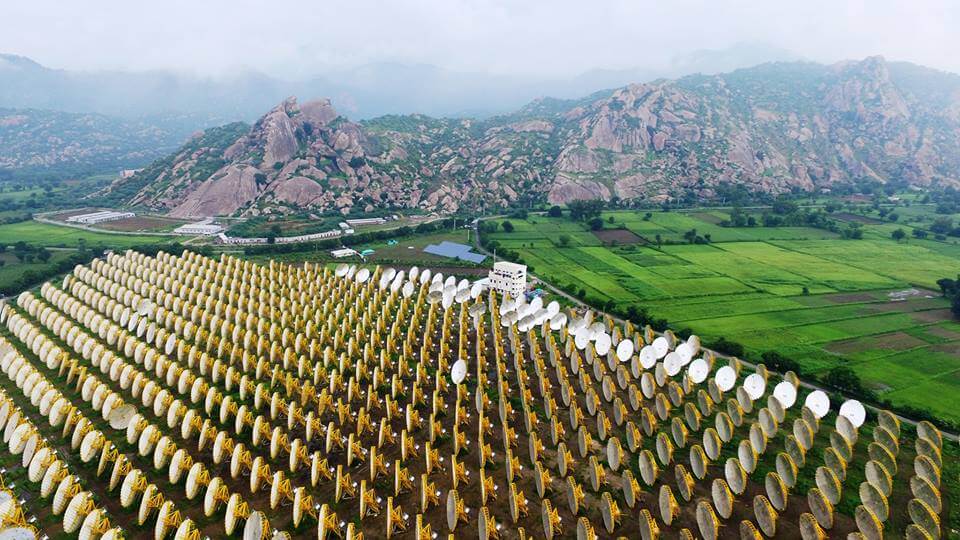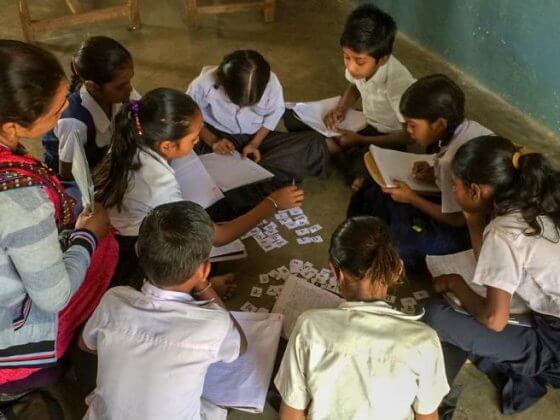One of the most important results in India from the pandemic-driven lockdown that began in March 2020 was the reduction in carbon emissions and its beneficial impact on the environment. Travel restrictions and a decrease in industrial production have caused significant reductions in emissions. But these reductions were temporary. The results, however, highlights the need for India to reduce its dependence on carbon-emitting energy sources and shift the majority of its energy production to renewable sources that will better equip India towards achieving and even exceeding its Paris Agreement targets.
The Indian renewable energy sector is the world’s fourth-largest, after the US, China, and Germany. Its wind energy sector has the fourth-highest total installed capacity, 38.124 GW, in the world. Tamil Nadu, Maharashtra, Karnataka, and Gujarat are the leading states in wind energy. The solar energy sector has emerged as a significant player in the power generation capacity since the establishment of the National Solar Mission 2010. India achieved 5th global position in solar power distribution with an installed capacity of 35,739 MW as of August 2020.
Yet, over the years, the wind energy sector faced several problems such as an imbalance between demand and supply, persistent energy shortages, insufficient funds, high-transmission and distribution losses, and poor institutional infrastructure. Thus, it is important to identify the exact causes and find solutions so that upcoming projects can be better planned. This article identifies and analyses a few important barriers faced by the renewable energy sector.
Barriers to the sector
First, India’s renewable energy infrastructure, despite its considerable growth over the decades, lacks consistent standards as compared to other countries. Wind energy technology has not kept pace with the modernisation achieved across the world. Research, both in public and private sectors, is one way to mitigate the problem. Despite 80% of the technology being domestic, a significant quantity of manufactured components is imported from China. A mix of foreign and indigenous parts (with different quality and technical standards) results in inconsistency in the technology used which reduces the power plants’ overall efficiency. The Government, in a move to promote domestic manufacturers and “self-sufficiency”, has levied customs duty of 20-25% on solar cells imported from China.
A 2019 study suggests that the country would require an investment of Rs 1.65-1.75 lakh crore per year to generate cheaper power.
Second, the renewable energy sector is capital-intensive and requires high capital investment initially to set up the farms. One way to source funds is to increase private sector participation. With increased competition among the private sector to develop technology, the country would gain from the lower costs of power generation and higher employment opportunities. A 2019 study suggests that the country would require an investment of Rs 1.65-1.75 lakh crore per year to generate cheaper power. The Government needs to encourage companies like ReGen Powertech Pvt Ltd., through generation-based incentives and tax holidays, that will invest in renewable energy power plants for its long-term financial benefits, despite the risk factors involved. At a time when investments in the sector are growing, the Government’s move to rescind benefits, may not impact the big players but will certainly have an adverse impact on the volume of investments from small investors, who largely depend on the Government’s support.
Another financial barrier the sector faces is the lack of proper reinvestment. As the benefits from this sector are usually accrued in the long-term, the Government invests revenue from power generation in short-term development projects instead of reinvesting in the energy sector. Thus, for new solar energy projects to succeed, the efficient allocation of funds is pertinent. Alternatively, India could also follow Germany’s path. In Germany, since the energy transition set off in 2000, tens of thousands began investing in solar panels on their houses and buying shares in wind turbine producing companies, thus increasing capital. The government has actively engaged people in small cooperatives to favour energy transition from fossils to renewable sources.
According to a recent report by the Institute for Energy Economics and Financial Analysis (IEEFA), the total hybrid capacity is at 148 MW and is expected to increase almost 80 times in the next three years.
Third, the intensity of the wind and solar energy availability is unstable, and it restricts the total power generated. Additionally, the setting up of separate wind and solar power plants is expensive. Thus, the government’s National Wind Solar Hybrid Policy of 2018 is highly pertinent. According to the policy, the two sources of energy complement each other, since solar can fuel power in the day and wind at night. This also means that the solar panels and wind turbines can be set up on the same farm, thus reducing costs. According to a recent report by the Institute for Energy Economics and Financial Analysis (IEEFA), the total hybrid capacity is at 148 MW and is expected to increase almost 80 times in the next three years.
In relation, the renewable energy sector also faces the problem of storage. Although India has developed battery storage facilities, it lacks a central framework to control the use of energy storage systems. The technology available is not enough to store energy from all power grids. This implies that an equilibrium has to be maintained between the demand and supply of power from renewable energy to reduce wastage. But this is an onerous task. The Solar Energy Corporation of India (SECI) has recently encouraged bids for designing, engineering, and constructing new solar projects with provisions for battery storage systems. The recent World Energy Outlook report by the International Energy Agency (IEA) predicts that India will become the largest market for utility-scale battery storage by 2040.
The Government should treat PV waste separately and bring out recycling policies that will sustain the solar energy sector in the long run.
Lastly, the sector faces disposal issues as there is no proper system in place to dispose of broken solar panels and wind blades. Broken solar panels emanate harmful chemicals that are detrimental to the environment and consequently, public health. Solar PV waste is by default considered e-waste and is therefore guided by the e-Waste Management Rules, 2016. According to this, manufacturers are liable for the disposal of PV waste. But this regulation is inadequate. The Government should treat PV waste separately and bring out recycling policies that will sustain the solar energy sector in the long run. Europe, for instance, has set up a recycling plant that separates the different parts of the panel and recycles them individually. Given the increasing pace at which the solar energy sector is growing in India, setting up a similar method of waste management will benefit the sector and ergo the country’s future.
Conclusion
While India is responsible for nearly 6.65% of total global carbon emissions, it is also leading in the renewable energy sector. Its share of coal-based power plants in new installations declined significantly from 62% in 2016 to just 19% in 2017, whereas solar power led with around 45% of total power capacity additions. But to maintain this development, the Central and State governments should make coordinated efforts and bring out policies that ensure that power is affordable to all people, and efficiently manage renewable energy waste to not only reach its energy targets but also to ensure its overall development and growth.











